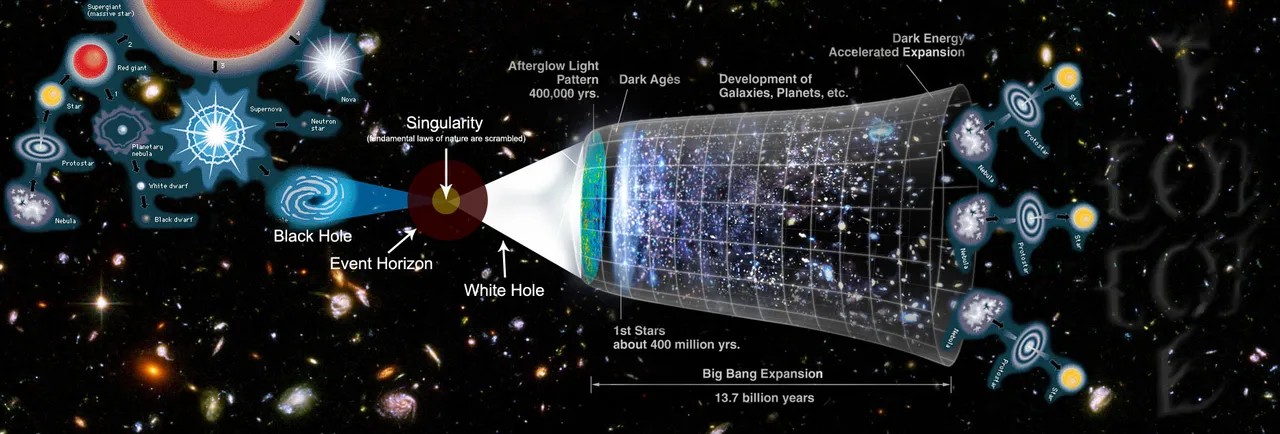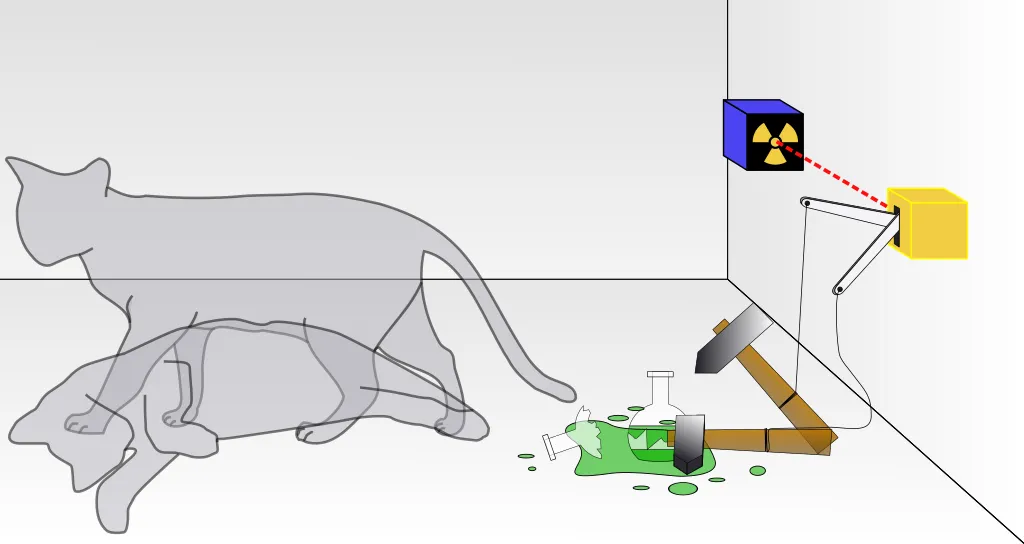That famous story by Lewis Carroll, tells us how Alice followed the white rabbit and fell into a hole that took her to a world with other physical laws. The science fiction writer Philip K. Dick has spoken about multiple parallel universes, there are many movies and TV series in which they appear and the characters can travel between them. And there are even stories of people who claim to have moved to alternative realities where Things are strangely different.
This is where the question arises.
- Are there other universes?
The first thing you should know is that we do not talk about "other dimensions". The word "dimension" means "measure" and refers to magnitudes such as height, width and depth ... and yes, there are more than 3 dimensions, but in this post we will not talk about this topic. Now what we are interested in are the parallel universes.
There are basically 2 ways in which they could exist:
The first is that as our universe formed and expanded, like a bubble, others were also formed, of other sizes and with other physical constants. There would be, for example, a universe where the speed of light is lower and perhaps another where gravity works differently. This set of universes is called "Multiverse."
Our own universe is huge and continues to expand, so we can only know a part of it; It is the so-called "Cosmological Horizon". No matter how fast we travel, we can never reach it, so we could never visit other universes, and particles like the light that come from outside this horizon can not reach us either: we can not even have the smallest information beyond the horizon, much less beyond the universe.
And if that were not enough, the universe if it has a limited volume, could be curved so that, even if we traveled at an impossible speed ... we would reach the same place.

Multiverse; Source
The second way in which other universes could exist is due to the properties of quantum physics. As you know, a quantum system, like an atom, is in quantum superposition. This means that its properties are in several states at once. Thus, an atom is not a miniature solar system, made up of solid particles, but rather a "probabilistic cloud".
The probabilities of the different states are described by the so-called Wave Function, if any of the properties is measured the wave function collapses and instead of being in several states it remains in only one. This only happens on an atomic scale and large objects like stones or cats are governed by classical physics and never exhibit quantum superposition ... or do they?
Schrödinger wondered: what if the state of a macroscopic being depended on an object on a quantum scale?
Then he devised a thought experiment: imagine that we put a cat in a box and together with it an unstable atom that has equal chances of decaying that of remaining the same in a certain period, there is also a mechanism that detects if the atom decayed. If so, it blows up a vial of poison that kills the cat. If it does not decay, nothing happens. The curious thing about this is that if no one observes the atom, it is at the same time in the two states, therefore the cat is also in two states; alive and dead at the same time. Until someone opens the box and the cat is in one of the states. This experiment has several interpretations.

Diagram of Schrödinger's cat thought experiment; Source
The interpretation of Copenhagen says that at the time when the observation is made, the wave function collapses, this could be when the observer opens the box or from the moment when the mechanism detects the state of the atom.
Another fascinating interpretation is that of "the many worlds". This says that, in effect, the cat is alive and dead simultaneously only in different universes; There is a universe where the cat is still alive and another where the cat is dead.
An interesting consequence is that each time an event depends on a quantum event, history will bifurcate once again giving rise to parallel universes that never interact with each other. This could have happened from the origin of the cosmos and there could currently be countless universes.
A more risky interpretation says that it is the conscience that collapses the realities. The questionable thing is that in this argument the proponents of quantum mysticism are supported like those of "The Secret", that without understanding much of quantum mechanics they affirm that with only wishing it much you can choose the universe that suits you.
Although the interpretation was true, there is nothing to indicate that it is possible to travel from one universe to another. There are other interpretations of the Schrödinger cat experiment that do not involve parallel universes. For example, they believe that any being or device can be considered an observer, so the wave function collapses immediately. (Book "The Secret"; Source of the image)
Another, called transactional interpretation says that the cat is never in overlap. The system sends a wave to the past that defines one of the states from the beginning.
conclusion.
Without a scientifically rigorous means by which such a multiverse concept could be checked, verified and refuted, the idea remains as only a conjecture. In addition, the idea has several scientific difficulties and problems that today are the subject of discussion.
Although one knows that a universe exists, what we do not know, is if there is more than one universe. The theory of general relativity indicates that the space-time limit of that universe can never be superimposed on the space-time limit of any other universe that possibly exists. In other words, even if God made ten universes, we would forever lack the scientific means to detect any universe other than ours. The sample size of universes, therefore, is limited to one.
- If you liked what you just read do not forget to share and support me @jlmol7
References.
- https://www.scientificamerican.com/article/multiverse-the-case-for-parallel-universe/
- https://www.thoughtco.com/copenhagen-interpretation-of-quantum-mechanics-2699346
- https://science.howstuffworks.com/science-vs-myth/everyday-myths/parallel-universe2.htm
- https://www.quora.com/What-is-a-cosmological-horizon
- https://es.wikipedia.org/wiki/Philip_K._Dick

